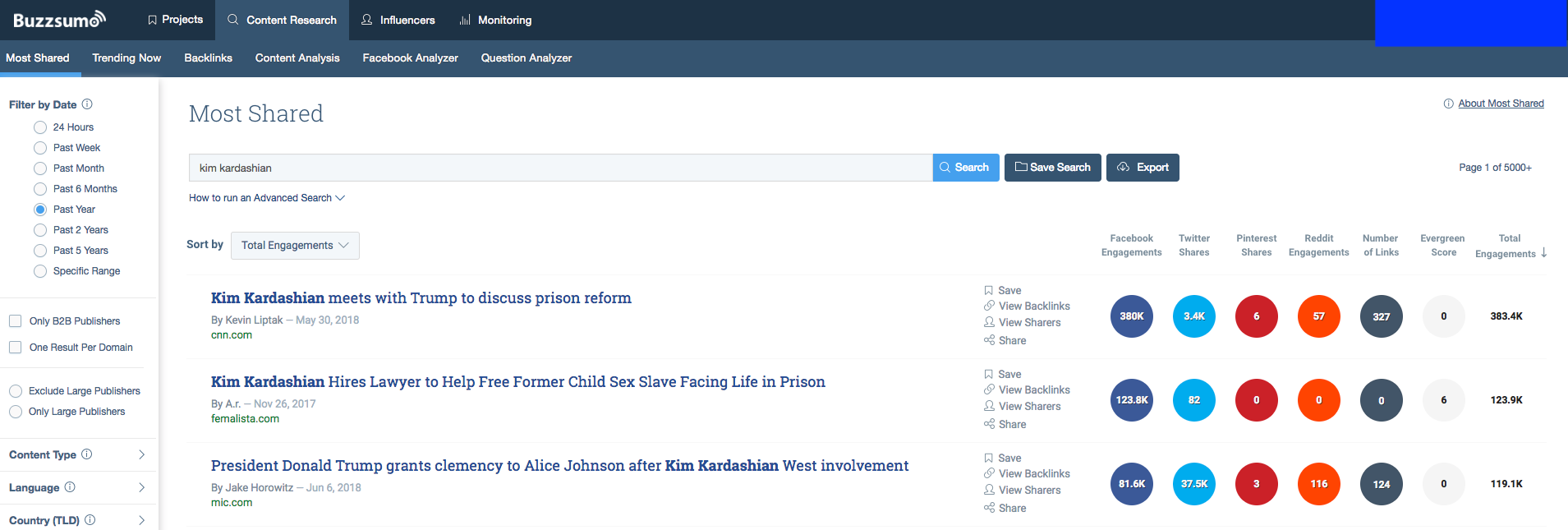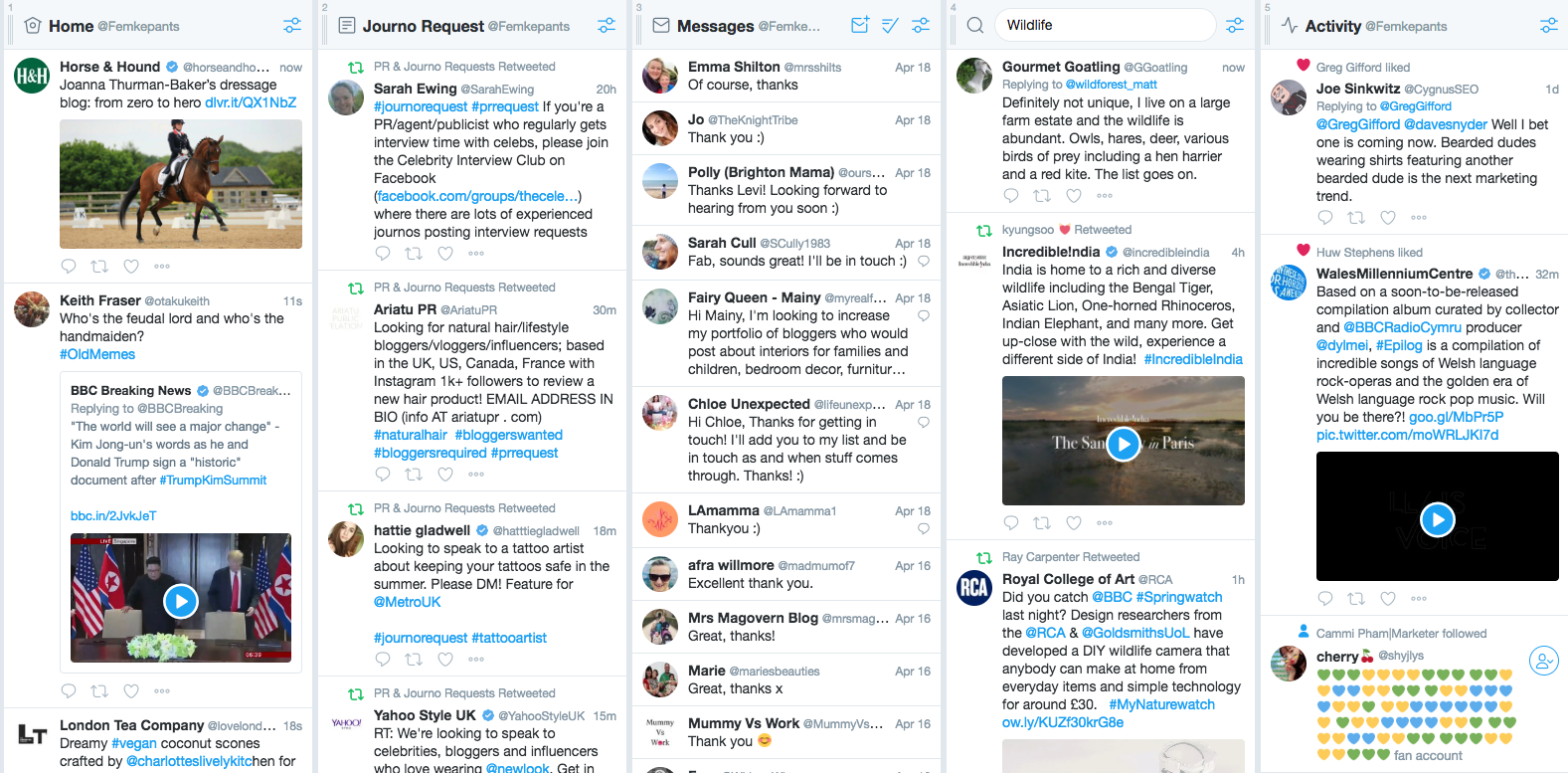As Buzzsumo recently discovered, only 5% of content gets more than 300 shares. So, if you’re publishing some content about a popular topic like bitcoin – you’re potentially competing with up to 40,000 other pieces of content a week.
Ninety percent of content gets less than 60 shares, and no wonder – the internet is quickly becoming overwhelmed with content, and every day we’re fighting harder and harder to get noticed. This fuels the fact that we just can’t physically care about everything we see – which is what we like to call ‘content shock’ – a phrase coined by Mark Shaefer in 2014. There’s so much content out there that you either have to have a huge budget for promotion of every piece, or you’ve got to be making content that ‘cuts through the crap’.
Why don’t people care?
Here are some reasons why consumers might not be responding the way you need them to:
The purpose of your content isn’t clearly defined or has the wrong direction
If your content is specifically for SEO and link-building, there’s your first problem. Content should be made for the readers first and then for business needs. It seems silly to not think about SEO and linkability first and foremost, but if you truly think about what you read when you’re scrolling the web, is it stuffed with keywords, lots of plain text and internal links? Is it boring? Is it really, really niche? Your first thing to address should be making sure that your content doesn’t feel like an SEO project.
It doesn’t start a discussion
This is a little trick I learned from Laura Crimmons at SilverThorn and Beth Hibbert from Branded 3. If I said to you while we were having a pint: ‘Did you know, I found a graph about average tyre thicknesses in the UK. Isn’t it cool?’ you’d probably question my choice of small talk. If I said, ‘Did you know Kim Kardashian makes your salary in three minutes?’ we’d probably spend the next half hour talking about how unbelievably ridiculous that is. See where I’m coming from?
It doesn’t make you feel anything
Does your pie chart about tyre thickness make you feel angry? Or sad? Or happy? If you don’t get an emotional response from your content, you’re not making something worth sharing. OK, it might be interesting to a CEO of a tyre manufacture company for example, but you won’t get the same response from her or him as you would if you’re talking to a wider audience – unless you’re specifically targeting those industry names. In which case, you probably won’t build mega links, but they should be valuable and relevant.
It doesn’t teach you anything.
I often read articles and come away with a tidbit of information, or a story, or something that I didn’t know before to talk or think about. For example, using the same example as above, I learned that Kim Kardashian made my salary in moments, had an emotional response, and took that information away with me to share my anguish & educate other people. Just because it’s not academic, doesn’t mean you’re not teaching someone something. This is why makeup tutorials are SO popular – they’re engaging, accessible and easily shared snippets of content that teach you something that you might want to share
There’s no proof to back up your words
People LOVE to see real-world proof. If you got some data that sounds like it comes from a super fancy organisation, or a governmental body, or even a bigger market shareholder than yourselves/your client, you’re far more likely to encourage people to engage with your content. Case studies, research studies and reviews from real people are your best friend when trying to convince someone to place your link, buy your product or trust your word.
If you can address all of those problems, you’re a step closer to getting your audience to take more notice of your content.
So, what do you do to make people care?
There are some other ways to make sure you’re making content people are going to care about – including the following tools that can make life way easier. These avoid you getting really excited about an idea or content piece that then ultimately flops because you didn’t test it, and turns out nobody really cares.
Popular Content Analysis: Using a tool like Buzzsumo, if you type in a theme, title or keyword, you can see what the most shared bits of content are in the vertical. You can check out who shared them, what kind of content it is and use this info as an indicator for how you could change up your content for shares. AnswerThePublic is also really helpful for this, which shows what people are asking about that theme.

Social Media Scan: Watching your news feed is often helpful. Is there anything similar to what you’re making or are familiar with your ideas in your news feed? It’s likely that you’ll get the most popular content from all the industries you’re involved in. If you don’t already, put yourself in those communities, follow people and engage with posts in the industry that you or your client is in. Hashtags are of course the perfect way of filtering out this info, as well as using Tweetdeck where you can sort all of your newsfeeds into handy topics. Of course, this won’t work right away and will benefit you more over time.

Audience Analysis: Survey your email base and engaged users or ask people you know what they’d like to see and what they don’t like seeing. People are always willing to give you feedback, especially if you incentivise it, e.g. answer our survey and get free delivery from our web store, or a free pen with your next purchase.
Outreach is just as important!
Sometimes, you have amazing content that could change the world – but nobody cares because you’ve pitched it poorly, to the wrong people or just fluffed the ‘whole outreach process’ a little bit. It happens to all of us. Outreach is tough and your outreach can be just as effective as your content in getting the attention of both journalists/editors and readers as to what you’re offering.
My favourite person to use as an example of a great ‘outreach-er’ is Gisele Navarro, from Neomam. Gisele suggests that “If you can’t describe your content in a short sentence, don’t follow through with it and start ideation again.” Here are some great blogs and a cool infographic on outreach to keep your style fresh and effective:
How to Create Catchy Effective Subject Lines for Link Outreach
How to Turn a Boring Email into an Irresistible Link Pitch
When reflecting on your campaigns, you should analyse your results and keep an eye on reporting/analysis tools like Majestic and Google Analytics, which will highlight where your links have been placed and if they’re driving traffic or leads. It’s a good way to judge how much people you’re speaking to care about what you’re saying and if you are indeed cutting through the crap.
Last but not least, here are some things to remember:
- Content marketing for link-building is risky. There is, as with any marketing, no guarantee.
- Never rely solely on content marketing for link-building. Local link-building, citations and resource link-building (old school) are valuable and should be carried out regardless of content marketing projects.
- Outreach and content marketing is a tough way to build links – everyone makes mistakes. Keep going, you’ll get there.
- Link-building with content pieces shouldn’t be treated as a start-to-end campaign – if you get an opportunity to push some content that’s not brand new, but it’s relevant, go for it.
- Outcomes for the business are just as important as the number of links built. If you only got two links, but both drive traffic and/or sales leads, you did as good a job as if you built 100 links that did neither. Both are beneficial and should be kept in mind.
Hopefully, this guide should help you feel a bit closer to getting people to care about your content. If you have any questions or any tips you think would be good to add, get in touch with us!















